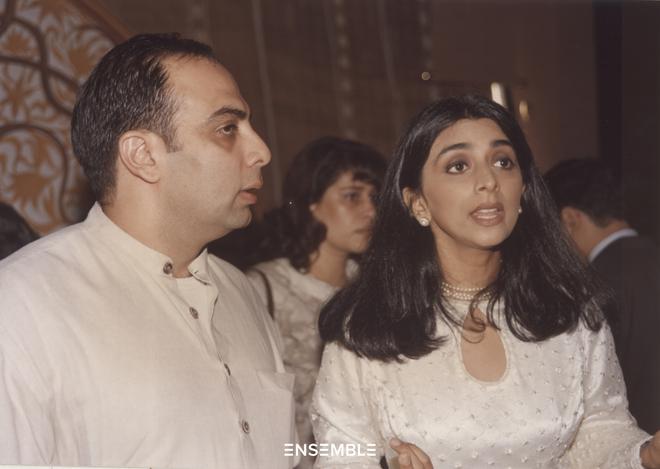With Ensemble completing 35 years, Tina Tahiliani Parikh shares her rulebook on surviving fashion retail in India
With Ensemble completing 35 years, Tina Tahiliani Parikh shares her rulebook on surviving fashion retail in India
For 35 years now, Tina Tahiliani Parikh, has been identifying and mentoring new talent, curating collections and ensuring that Ensemble stays ahead of the curve. The last few years, especially, have seen her take luxury retail online, flirt with social media, and brave the pandemic, all the while scouting new designers. Some of the country’s biggest fashion names started their fashion journey with Ensemble, but she discounts as myth that one must be a fashion week designer to make it.
“Honestly, our raison d’etre is to find and promote new design talent and I’m proud to say that 80% of India’s designers were launched at our Kala Ghoda store. Pre fashion weeks, we used to go out and search for new talent on our own. Fashion week, of course, made things easier. But I find it more exciting to look for talent who don’t have the bandwidth to be at such an event,” quips Parikh, who is in her 50s.
In fact, many of her recent discoveries — whether it is Kshitij Jalori or Karan Torani — were identified this way. “They’ve never been to fashion week and we’ve found them. A part of our job is to keep exploring and we work with designers even in Pakistan, Sri Lanka and Bangladesh,” she adds.
Instagram discoveries: With Instagram and designers unveiling their look books there, it’s so easy to launch oneself. “Very often pictures are deceptive. We definitely look for an original point of view and are constantly being approached by designers who’ve worked with established names. We understand that their first collection is likely to be influenced by who they’ve worked with, but we keep a very strong eye. We look for fit, quality and finish.
Many things look beautiful on the hanger, but they don’t fit right on the body. Funnily enough, it is very easy to become a designer in India today but sustaining oneself is the real challenge. Honestly, you can have four tailors in your garage in Delhi and become a designer. We look for people who have the thumbprint of what their brand stands for, but are able to move forward and innovate, and who are committed and consistent. It’s a tough industry,” she notes.
Battling plagiarism: “It has happened once or twice when a designer has reached out to me saying, ‘I have seen this garment on your Instagram and this aspect of this garment resembles what I did’ and I have always gone and spoken to the designer and worked around it,” she says.
Over the years, there have been instances when designers have called her over plagiarism issues. “Who owns what? That’s a big question. Way back when we started, one of our designers said, ‘Nobody can do churi sleeves’, if you look at the Mughal history, every man or woman is wearing churi sleeves. A can of worms you’ve opened. It’s a fine line that we tread. We are extremely conscious of it.”
Two kinds of shoppers: However, does a shopper care if it’s a copy while making a purchase? “There are customers and there are customers — some are very committed to design. A vast majority may not care and are interested in procuring the outfit and are budget conscious and now with Instagram, they want the garment to photograph well,” she says.

From the Ensemble archives — Tina Tahiliani Parikh with her brother Tarun Tahiliani
| Photo Credit: Special arrangement
During the lockdowns, there was a huge pent-up demand for bridals with 50 guest weddings taking place. A lot of classics, textile-driven pieces became a rage. All in all, we figured out ways to navigate the uncertainty so that it was fair to everyone.
The ‘rewear’ proposition: “What’s important is that people are becoming conscious that fashion is the second-most polluting industry in the world. However, which brands in India are truly sustainable — there’s no yardstick to measure this. One of the best ways to be sustainable is to encourage our clients to rewear their garments. In one of our initiatives — rewear — we encourage our clients to come to us with old pieces and we tell them how to mix and match and rewear it several times. I live by this and I wear my clothes till they tear.”
Managing consignment: A lot of designers had an issue about the usual consignment rules when their collections were returned unsold and damaged during the pandemic. One wonders if the rules have changed? “During the pandemic, in many cases, we had extended support to designers to try and make it through. If they had any of our advances with them, we let them be. Many of our designers transitioned to order basis simply because there was a huge amount of uncertainty and a lot of designers had lost their workers [who had gone home during the lockdowns].”
























